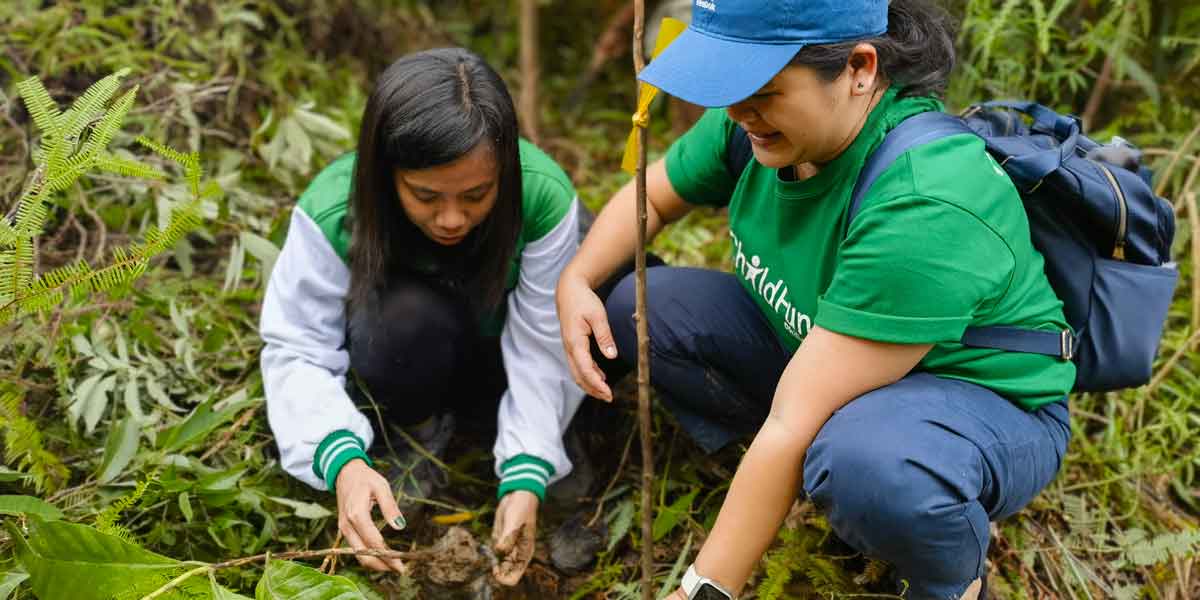The newly formed National Panel of Technical Experts (NPTE) of the Climate Change Commission (CCC) has identified the Top 10 climate hazards in the Philippines that all require urgent climate action, including salt intrusion in croplands due to rising sea levels, temperature increase, and large-scale flooding.
At a recent media briefing hosted by the Department of Finance (DOF) via Zoom, DOF Assistant Secretary and Spokesperson Paola Alvarez opened the discussions by giving a briefer about the NPTE’s mandate and quickly introduced the experts present during the forum.
The first question tackled how modern times affect climate. Dr. Emma Porio attributed its effects to the Filipinos’ consumption-driven lifestyle and the fast rate at which the Earth is consuming natural resources.
“One IPCC (United Nations Intergovernmental Panel on Climate Change) author was saying that at the rate we are consuming the Earth’s resources, and extracting, we would need three Earths to sustain our lifestyle as of now,” she said.
The second question addressed the saltwater intrusion in rice fields for the Philippines, with Dr. Nathaniel Alibuyog citing, “the immediate effects of saltwater intrusion in our studies in the Island Province of Bicol Region is more of the reduction in the production of rice.”
Engr. Merriam Santillan echoed this concern, and explained that salt intrusion can be attributed to excessive groundwater extraction and sea level rise.
“Studies show that saltwater intrusion has significant effects on the growth of rice as it decreases the protein content of rice among others,” she added.
Dr. Renzo Guinto reaffirmed the negative effects of saltwater intrusion saying, “But also, in terms of health impacts, we did a very rapid review of evidence from around the world, and out of the nearly 30 papers we have seen there is already growing evidence about the impacts of intake of water high in salt.”
Guinto further added as well that intake of water with high salt content can lead to hypertension, miscarriage, problems among pregnant mothers, and kidney stones among others. “These are just some of the effects that we should actually be monitoring,” he concluded.
The country is still conducting further research on other varieties of rice that can withstand or adapt to saltwater intrusion and technology that can desalinate irrigation water.
Another question raised was on Pampanga flooding.
With the Pampanga river basin as the second largest river in Luzon, flooding in the area can be inevitable.
However, the NPTE members noted that climate change impacts also play a key role in the phenomenon.
“Only 37 percent of the basin is classified as timber land or forest land, so that is one thing that should be looked into, for the possible reason of flooding in Pampanga,” Santillan said.
Citing one of the recommendations in a study on Pampanga flooding, Santillan mentioned that restoring the channel width of the river, including the tributary rivers, and letting flood waters occupy their floodplains can help.
For the fourth question, opportunities to earn from recycling and waste management was raised as proper waste management was also cited to be one of the recommendations to combat Pampanga flooding.
Dr. Jihan Adil said that with recycling centers and junk shops that collect recyclables already in place in the Philippines, the government just needs to facilitate waste collection.
She said that in order for recyclables to be useful again as raw materials, these need to be cleaned prior to reuse.
Dr. Maria Angela Zafra also suggested the Extended Producer’s Responsibility (EPR), which requires the industrial sector, manufacturers, and producers to take care of the final life stage of waste materials, especially the packaging.
On biodiversity and fisheries, a question regarding Mindanao and Tawi Tawi’s current situation was raised as biodiversity, food production and food security are among the most heavily impacted by climate change, especially for the region that is also among the poorest in the Philippines.
Dr. Richard Mualil briefly discussed how weather in Tawi-Tawi is relatively stable.
There has been no recorded typhoons for the past year that can damage fisheries. But as far as biodiversity is concerned, illegal fishing is still rampant, especially in remote areas.
Dr. Wilfredo Campos said, “A rise in the temperature can be detrimental to the many species in the area, some will move out of that area.” When it comes to productivity, the region is one of the most productive areas for fishing, mostly because of its oceanography.
Thus, any changes to the oceanography will affect the species, fishery production and the industry sector as a whole.
Meanwhile, the World Wide Fund (WWF) Philippines raised its concern on deforestation, inquiring about the government’s concrete actions to support the call to stop deforestation and beyond just a motherhood statement of support.
“Deforestation can be minimized and resolved through an ecosystems-based solution if we provide the local government units (LGUs) the responsibility and space to really take part, providing them the authority”, Dr. Eduardo Mangoang stated as he cited the importance of LGUs’ participation in reforestation.
Logging policies also need to be revisited, especially because selective log bans perpetrates illegal logging, according to Dr. Susan Mercado.
As the NPTE members released the Top 10 climate-induced hazards in the Philippines, a member from the audience inquired if there is a specific priority or ranking among these issues based on urgency.
The members all agreed that the identified climate hazards are all equally urgent and need as much prioritization as the others.
It will be difficult to pinpoint which one is a most urgent hazard per region as it depends on the area’s topography and geography.
Santillan cited a rapid risk assessment that the NPTE has done on sea level rise in Dinagat, Siargao, Bucas Grande and Surigao del Norte.
The experts observed that for a certain number of sea level rise, a specific area of a region as well will be inundated but in varying degrees.
For instance, for a 0.5 meter rise, around 30 percent of Siargao can get inundated while it will only be 6 percent for Dinagat Island.
Thus, a consolidated database of studies is necessary to come up with analytics for different impacts on a specific location.
The last question entertained was on the draft national policy for nuclear energy to be included in the country’s energy mix.
Although the NPTE still did not have an official stand on the issue, the experts offered their insights.
Adil said the Philippines is ready to include nuclear energy into the country’s energy mix as studies have shown that 88 percent of accidents are caused by acts of people, 10 percent by unsafe actions and 2 percent by acts of God.
Thus, a well-designed, correctly located and properly operated nuclear facility will not only contribute significantly to the reduction of carbon emission from the energy sector; it can also contribute to economic development.
Dr. Porio and Dr. Guinto, on the other hand, offered clean alternatives to nuclear energy that might be beneficial to look into and needs to be harnessed.
They coined the acronym “BIGSHOW,” which stands for Biomass, Geothermal, Solar, Hydro, Ocean Thermal and Wind—or the energy sources that are classified good for both people and the planet.
The top 10 climate risks identified by the NPTE are the following: 1) the rising sea levels, 2) coastal erosion, 3) flooding, 4) increasing frequency and severity of tropical cyclones, 5) extreme drought, 6) temperature increase and rising urban heat index, 7) extreme rainfall, 8) climate-influenced diseases, 9) wind patterns, and 10) biodiversity loss.
Watch the full NPTE Media Briefing on the DOF’s Facebook Page: https://www.facebook.com/DOFPH/videos/239103708259868/ or visit the official website for further updates and information on climate action at www.dof.gov.ph



























